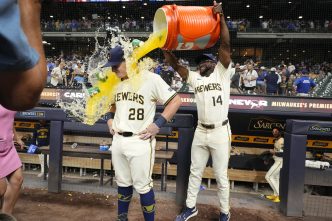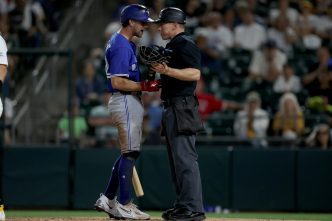The Miami Marlins have carved out a unique niche in the Major League Baseball landscape, often appearing as the league’s enigma. Since their debut in 1993, the Marlins have clinched two World Series titles, showcasing their ability to rise to the occasion when it matters most. Yet, despite this pedigree, the team has struggled with consistency and often finds itself languishing near the bottom of the standings.
At the heart of the Marlins’ challenges lies a persistent issue: their reputation for frugality. The organization has gained a reputation for acquiring superstar talent, only to part ways with them before a significant financial commitment is made. Names like Miguel Cabrera, Giancarlo Stanton, and Luis Arraez come to mind—but even illustrious players like Mike Piazza spent a fleeting moment in a Marlins jersey before being traded away. It’s a short list that rings alarm bells for a franchise that boasts such raw potential.
Beyond their transactional tendencies, the Marlins seem to struggle in creating a welcoming and supportive environment for their players. A recent survey conducted by The Athletic revealed that players ranked Miami just above the bottom tier when it comes to overall enjoyment of playing there. Comments from players hint at a culture that feels more budget-conscious than big-league, with one player remarking on the mundane nature of travel meals—specifically, the seeming reliance on Subway sandwiches during road trips. It’s the kind of detail that raises eyebrows and brings to light frustrations about what it means to play in a major league setting.
Further compounding the Marlins’ predicament is a lack of clarity around the team’s long-term vision. A player candidly expressed concern over the franchise’s direction, pointing out that with many prospects still several years away from making a meaningful impact, the path to success appears foggy. This sentiment encapsulates the broader malaise within the organization, where talent exists but often feels mismanaged.
Despite this turbulence, it’s worth noting that the Marlins have made playoff appearances over the past few seasons. However, their frequent roster turnover has made it difficult for fans and analysts alike to truly gauge the team’s potential. For a franchise with such a rich history and the capability for scouting and developing talent—especially in pitching—the continued cycle of trading away star players leaves a tantalizing yet frustrating question: when will they find the stability and commitment necessary to capitalize on their prospects and go deep into October?
As the Marlins navigate these waters, one thing is clear: the future holds promise, but only if they can shift gears from a pattern of short-term thinking to one that builds a sustainable contender in South Beach.a







